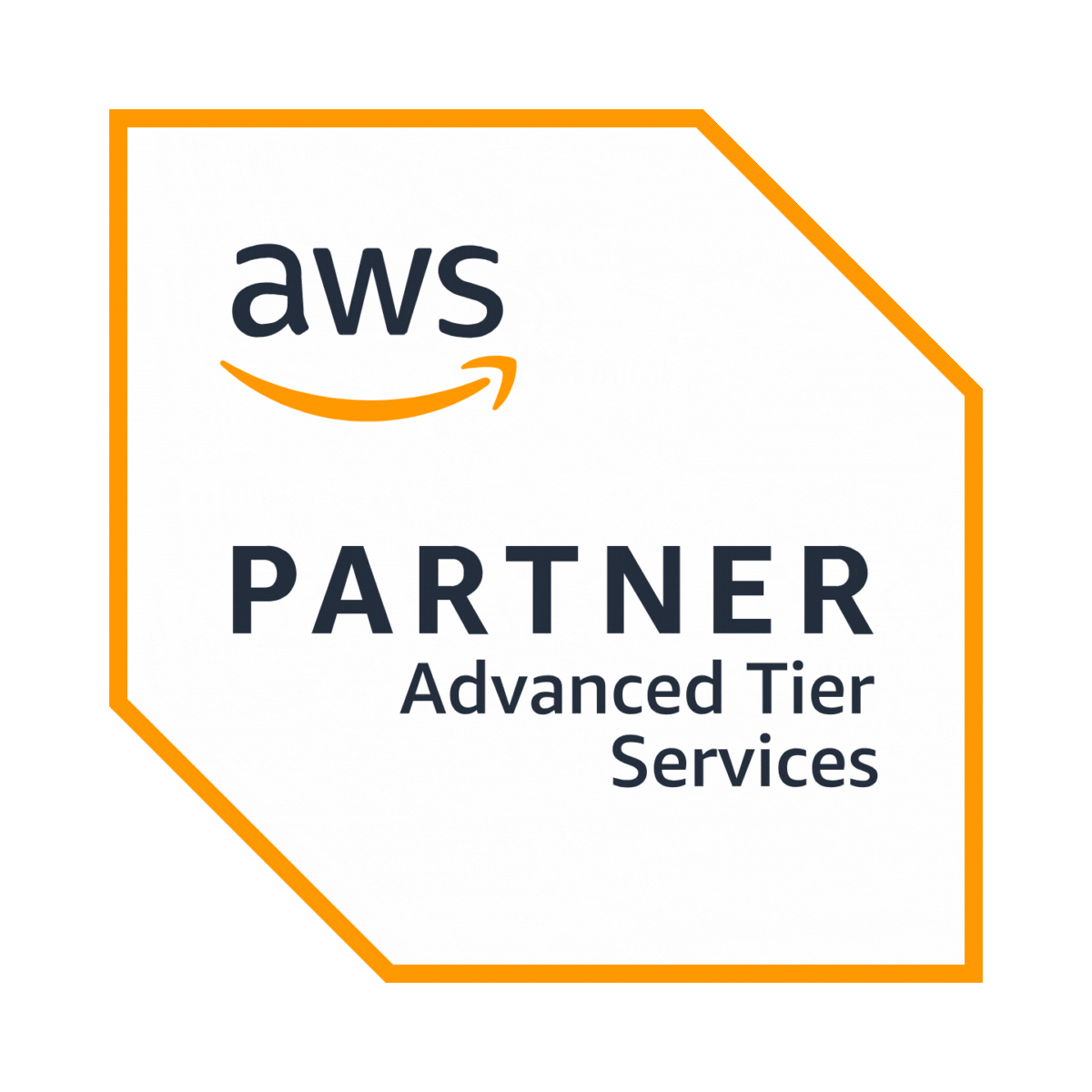The healthcare industry is undergoing a profound transformation, driven by advancements in technology and the increasing need for efficiency. As patient expectations evolve and regulatory requirements tighten, healthcare organizations are seeking solutions to enhance operational efficiency, improve patient care, and reduce costs. One of the most significant shifts in recent years is the adoption of cloud technology.
Healthcare cloud migration has become a critical strategy for healthcare providers looking to modernize their infrastructure, manage vast amounts of data securely, and scale their operations. By moving data and applications to the cloud, healthcare organizations can unlock numerous benefits, such as real-time access to patient information, streamlined operations, and the ability to adapt quickly to changing market demands.
In 2025, as more healthcare organizations embrace digital transformation, cloud migration is no longer just a trend, it's a necessity for staying competitive and compliant in an increasingly complex healthcare landscape.

Why healthcare organizations are moving to the cloud
Healthcare organizations are increasingly adopting cloud migration to address challenges like rising costs, complex data management, and the demand for innovation. Moving to the cloud offers solutions that enhance efficiency, security, and scalability.
1. Cost efficiency and scalability
- Cost savings: Cloud migration helps healthcare organizations cut costs by eliminating the need for expensive on-premise infrastructure and maintenance. Instead of paying for hardware, storage, and IT staff, healthcare providers can access scalable resources as needed.
- Scalability: With cloud solutions, healthcare organizations can scale storage and computing resources up or down based on demand. This pay-as-you-go model enables more flexible financial management and ensures that resources are allocated efficiently.
- Market growth: The healthcare cloud migration market is projected to grow at a compound annual growth rate (CAGR) of 17.5%, reaching an estimated $79.8 billion by 2028 (Grand View Research).
2. Improved data accessibility and collaboration
- Real-time access: Cloud solutions improve real-time access to patient data, allowing healthcare professionals to collaborate and make more informed decisions. According to a 2023 survey by KPMG, 63% of healthcare executives say cloud solutions have significantly improved their ability to access real-time data.
- Remote care: With cloud-based systems, healthcare providers can offer telemedicine and remote patient monitoring, expanding care beyond traditional settings and making it easier to reach patients who might not otherwise have access to healthcare services.
3. Enhanced data security and compliance
- Data protection: Security is a top priority for healthcare organizations. According to Gartner, 56% of healthcare organizations listed data security as their biggest concern when considering cloud migration.
- Regulatory compliance: Cloud providers invest in robust security features, including encryption, regular backups, and compliance with stringent regulations like HIPAA. Migrating to the cloud ensures healthcare organizations can meet compliance standards while keeping patient data secure.
3. Benefits of healthcare cloud migration
Cloud migration offers numerous advantages that go beyond cost savings and scalability. Healthcare organizations are leveraging the power of the cloud to enhance data accessibility, improve patient care, and streamline operations.
1. Enhanced data interoperability
- Breaking down silos: Healthcare organizations deal with vast amounts of data across various systems. Cloud migration breaks down data silos, making it easier for different departments and systems to share information. This interoperability ensures that patient data is accessible across the care continuum, from hospitals to specialist clinics.
- Improved care coordination: When data is integrated and easily accessible in real-time, healthcare providers can collaborate more effectively, leading to better coordinated care and reduced errors.
2. Disaster recovery and business continuity
- Automatic backups: Cloud solutions provide robust disaster recovery options, such as automatic backups and geographically distributed data centers. This ensures that critical healthcare data is protected in case of hardware failure, cyberattacks, or natural disasters.
- Business continuity: In the event of an outage or disaster, cloud systems ensure healthcare organizations can quickly recover and continue providing patient care. Cloud providers offer 24/7 support and automatic failover to maintain business continuity.
3. Operational efficiency
- Streamlined operations: Cloud migration helps healthcare organizations streamline workflows by automating administrative tasks, improving data sharing, and reducing reliance on manual processes. This boosts overall operational efficiency, freeing up resources for patient care.
- Real-time analytics: Cloud solutions enable healthcare providers to leverage data analytics for insights that improve decision-making. Real-time analytics support evidence-based practices, personalized care, and predictive insights, such as identifying patients at risk of developing chronic conditions.
4. Improved patient experience
- Faster access to care: With cloud-based systems, patients can access their medical records quickly, schedule appointments, and consult with healthcare providers remotely. This improves patient satisfaction by reducing wait times and providing more convenient access to care.
- Telehealth integration: Cloud infrastructure supports telemedicine and virtual care platforms, enabling healthcare providers to reach patients regardless of location. This is especially crucial for rural areas where access to healthcare professionals is limited.
The role of artificial intelligence and data analytics in healthcare cloud migration
Artificial intelligence (AI) and data analytics are not just add-ons to healthcare cloud migration; they are transformative technologies that are reshaping how healthcare organizations operate. By harnessing AI and advanced analytics in the cloud, healthcare providers can unlock deeper insights, enhance decision-making, and improve patient outcomes.
1. AI-powered insights for personalized patient care
- Predictive analytics: AI can analyze large datasets to identify patterns and predict future patient needs. This allows healthcare providers to personalize care based on individual health data, improving treatment outcomes and reducing unnecessary interventions.
- Real-time decision support: AI tools in the cloud provide real-time decision support, helping healthcare professionals make faster, data-driven decisions. For instance, AI algorithms can identify early warning signs of health issues such as sepsis or heart failure, alerting medical staff before a crisis occurs.
- AI solutions enable healthcare organizations to implement predictive analytics and real-time decision-making tools to optimize patient care.
2. Data analytics for operational efficiency
- Improved resource allocation: With cloud-based data analytics, healthcare organizations can track resource usage, patient flow, and workforce productivity in real time. This helps administrators make informed decisions about staffing, inventory management, and patient care, improving overall efficiency.
- Cost reduction through data insights: Advanced analytics also helps identify inefficiencies and areas where costs can be reduced. For example, data-driven insights can reveal patterns in patient visits, helping healthcare organizations predict peak times and allocate resources accordingly.
- Data analytics solutions enable healthcare organizations to optimize their operations, improve patient throughput, and reduce waste.
3. Enhancing patient monitoring and care with AI
- Remote patient monitoring: AI plays a crucial role in remote patient monitoring, where data from wearable devices and home-based health tools are analyzed to track patient conditions in real-time. This provides healthcare providers with continuous insight into a patient's health, reducing the need for frequent in-person visits.
- Telemedicine support: AI integrated with telemedicine platforms can assess patient symptoms and recommend appropriate courses of action, further enhancing the patient experience by enabling more efficient virtual consultations.
- AI-powered remote patient monitoring systems have helped healthcare providers deliver continuous care, even when patients are at home, by leveraging AI to monitor their health data in real time.
4. AI-driven automation for administrative tasks
- Automating administrative work: AI can automate routine administrative tasks, such as billing, scheduling, and coding, reducing the burden on staff and freeing up time for more critical tasks. This allows healthcare providers to streamline operations and improve overall workflow efficiency.
- Error reduction: AI tools can help reduce human error in administrative processes, ensuring that patient data is accurately captured and managed.
AI and data analytics are crucial to the success of healthcare cloud migration. By incorporating these technologies, healthcare organizations can enhance patient care, streamline operations, and reduce costs, all while meeting the growing demand for personalized and efficient healthcare services.

Challenges in healthcare cloud migration
While the benefits of healthcare cloud migration are clear, the journey is not without its challenges. Healthcare organizations must navigate complex technical, regulatory, and operational hurdles to successfully transition to the cloud. However, with careful planning and the right expertise, these challenges can be mitigated.
1. Regulatory compliance and data security
- Navigating strict regulations: Healthcare organizations are bound by regulations such as HIPAA (Health Insurance Portability and Accountability Act) in the U.S., which mandate strict data protection standards. Ensuring that cloud services are compliant with these regulations is a significant challenge for many organizations.
- Data privacy concerns: Patient data is highly sensitive, and ensuring its security in the cloud is a top priority. Organizations must carefully assess the security protocols of cloud providers, ensuring that data encryption, access control, and auditing mechanisms are in place to protect sensitive information.
- Mitigating risks: Partnering with a trusted cloud migration company can help healthcare organizations navigate compliance requirements and ensure that security protocols are followed throughout the migration process.
2. Integration with legacy systems
- Legacy system compatibility: Many healthcare organizations still rely on legacy IT systems that are not designed to work with cloud platforms. Integrating these older systems with modern cloud solutions can be complex and time-consuming, requiring careful planning and investment in new technologies.
- Data migration challenges: Migrating vast amounts of data from legacy systems to the cloud is a significant undertaking. Ensuring data integrity and minimizing downtime during the migration process requires meticulous planning, testing, and validation.
3. Change management and staff training
- Resistance to change: Cloud migration often involves significant changes to workflows and processes, which can lead to resistance from staff. Employees may be hesitant to adopt new technologies, particularly if they feel their existing systems work well enough.
- Training and support: To ensure the success of cloud migration, healthcare organizations must invest in training and support for their staff. Educating healthcare professionals on how to use new cloud-based tools is essential for maximizing the benefits of the migration.
4. Cost of migration
- Upfront costs: While cloud migration can result in long-term savings, the initial migration process can be costly. These costs can include infrastructure upgrades, cloud service fees, and consulting services to help with the transition.
- Budget management: Healthcare organizations need to carefully budget for the migration process to ensure that costs do not spiral out of control. A well-planned migration strategy can help minimize expenses and ensure that the benefits outweigh the costs in the long run.
Despite these challenges, many healthcare organizations are successfully migrating to the cloud and reaping the rewards. By partnering with an experienced cloud migration company and following best practices, healthcare providers can overcome these obstacles and unlock the full potential of cloud-based solutions.
Cloud migration best practices in healthcare
Successfully migrating to the cloud requires more than just choosing a cloud provider, it involves careful planning, a strategic approach, and continuous optimization. To ensure a smooth and efficient transition, healthcare organizations should follow best practices throughout the migration process.
1. Strategic planning and stakeholder engagement
- Define clear goals: Before starting the migration, healthcare organizations must clearly define their goals. Whether it's improving data accessibility, enhancing security, or reducing operational costs, aligning the cloud migration strategy with organizational objectives ensures that the migration delivers tangible benefits.
- Involve stakeholders early: Engaging stakeholders from the beginning, including IT staff, department heads, and compliance officers, is crucial. Their input ensures that the cloud migration plan addresses both technical and operational requirements, and helps secure buy-in from key decision-makers.
2. Phased migration approach
- Start small and scale: Healthcare organizations should consider a phased approach to cloud migration. Instead of migrating everything at once, begin with non-critical systems or departments to test the process and identify potential issues. Once the initial migration is successful, gradually move more critical applications and data to the cloud.
- Pilot testing: Before full-scale migration, conducting pilot tests allows organizations to identify challenges in a controlled environment and refine their approach. This minimizes disruptions to day-to-day operations and ensures that the cloud solution meets expectations.
3. Collaboration with an experienced cloud migration partner
- Leverage expertise: Partnering with an experienced cloud migration company can make the entire migration process smoother. From assessing current infrastructure to selecting the right cloud services and managing the technical aspects of the migration, a trusted partner can guide organizations through each phase of the process.
- Ongoing support: Cloud migration doesn't end once the data is moved. Continuous monitoring and support are essential to ensure that cloud systems are optimized, secure, and aligned with evolving healthcare needs.
4. Data security and compliance checks
- Prioritize security: Data security must be a top priority when migrating to the cloud. Healthcare organizations should work with cloud providers that offer advanced encryption, access controls, and audit logging to protect sensitive patient data. Additionally, organizations must ensure that their cloud solutions comply with regulations such as HIPAA to avoid legal and financial penalties.
- Compliance audits: Regular audits during and after migration can help ensure that the cloud environment is fully compliant with healthcare regulations. Implementing these checks at each stage of the migration will help prevent security lapses and regulatory violations.
5. Employee training and change management
- Provide thorough training: Healthcare staff must be adequately trained to use the new cloud-based systems effectively. Training should cover both technical skills and new workflows to ensure that employees can adapt quickly to the new environment.
- Encourage adoption: Clear communication about the benefits of cloud migration, such as improved efficiency, real-time data access, and better patient care, can help reduce resistance to change. Incentivizing adoption and providing continuous support will help foster a positive transition to the cloud.
The future of healthcare cloud migration
As healthcare organizations continue to embrace digital transformation, the future of cloud migration looks promising. Emerging technologies, evolving patient needs, and ongoing innovations in cloud infrastructure are shaping how healthcare providers operate, deliver care, and interact with patients.
1. Advancements in cloud technology for healthcare
- Edge computing and AI: The next wave of cloud migration will see healthcare providers integrating edge computing with cloud infrastructure. This technology will allow for data processing closer to the source (e.g., medical devices, wearables) rather than sending all data to centralized data centers. This reduces latency and ensures that real-time analytics can be performed on-site, improving decision-making in critical care scenarios.
- Improved interoperability: Cloud providers are continually enhancing the interoperability of their systems. Future cloud platforms will allow for even more seamless integration across different healthcare systems, enabling more efficient data exchange and reducing fragmentation in care delivery.
2. Integration of artificial intelligence and machine learning
- AI-driven insights for healthcare delivery: Artificial intelligence and machine learning will play a critical role in the future of healthcare cloud migration. AI-powered tools will further optimize patient care by predicting patient outcomes, diagnosing conditions with higher accuracy, and identifying patterns in healthcare data that were previously difficult to detect.
- Automated decision-making: The future of healthcare cloud services will also involve the increased use of automated decision-making processes. AI algorithms will analyze patient data in real-time to recommend personalized treatment plans, assist in clinical decision support, and even manage administrative tasks like patient triage and scheduling.
3. Expanding telemedicine and virtual care
- Telehealth as the norm: The demand for telemedicine has skyrocketed in recent years, and this trend is expected to continue in the future. Healthcare providers are increasingly migrating to cloud-based telemedicine platforms, allowing patients to access care from home. The cloud's ability to scale rapidly and integrate seamlessly with other systems makes it an ideal solution for the growing virtual care market.
- AI-enhanced telemedicine: As AI continues to evolve, telemedicine will also benefit from enhanced capabilities. AI chatbots and virtual assistants will assist in preliminary diagnosis, symptom checking, and follow-up care, enabling healthcare providers to offer more comprehensive virtual visits.
4. The rise of blockchain for healthcare data security
- Blockchain for secure data management: Blockchain technology is expected to play an increasing role in healthcare cloud migration, providing an additional layer of security for sensitive patient data. Blockchain can ensure data integrity, prevent unauthorized access, and improve transparency in medical records. This technology will become a key component in managing healthcare data privacy and compliance.
- Data sharing and patient control: Blockchain will also enable patients to have more control over their health data, allowing them to grant access to specific healthcare providers or institutions as needed, ensuring privacy and security.
5. Cloud-based population health management
- Predictive health analytics: Healthcare organizations will increasingly leverage cloud platforms for population health management, using data analytics to predict and prevent health issues before they arise. By analyzing large datasets, healthcare providers can identify trends, track health outcomes, and deliver more effective preventive care.
- Collaborative care models: Cloud technology will support more collaborative care models, where healthcare providers across different specialties and settings can work together to manage patient health. The cloud's ability to facilitate real-time data sharing will enhance care coordination and improve health outcomes across populations.
As we look ahead, healthcare cloud migration will continue to evolve, driven by advancements in AI, machine learning, edge computing, and blockchain. The future of healthcare is increasingly digital, and cloud technology will be at the heart of this transformation, empowering healthcare providers to deliver better, more efficient, and more personalized care to patients.
Embracing the cloud for a healthier future
The healthcare industry is at a critical crossroads, where the need for improved patient care, operational efficiency, and data security has never been more urgent. Cloud migration offers a transformative solution to these challenges, enabling healthcare organizations to harness the power of data, AI, and real-time analytics for better decision-making and patient outcomes.
Healthcare cloud migration is not just a technological shift, it's a step toward a healthier, more efficient future. By embracing the cloud today, healthcare organizations are positioning themselves to meet the demands of tomorrow’s healthcare landscape.


















